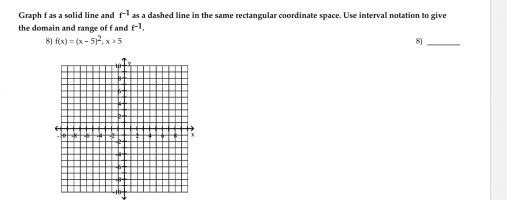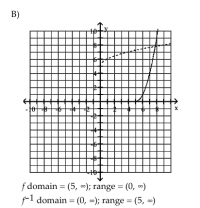fattymangoes
New member
- Joined
- Jun 9, 2022
- Messages
- 1
I need to show my work for the whole problem and the answer is B. ( ive attached it). My only problem is that I don't know how to do anything (big ik). Any help would be much appreciated!
Here's the work that i did (i tried to find the inverse first):
y=(x-5)^2
square root X = square root (y-5)^2
square root X +5= y


Here's the work that i did (i tried to find the inverse first):
y=(x-5)^2
square root X = square root (y-5)^2
square root X +5= y


